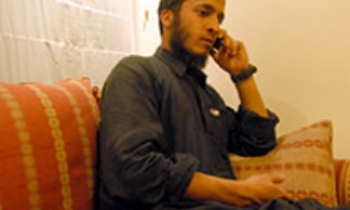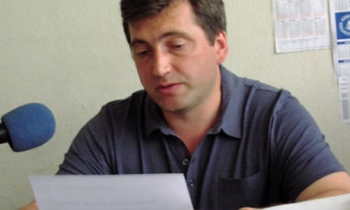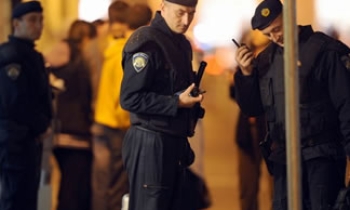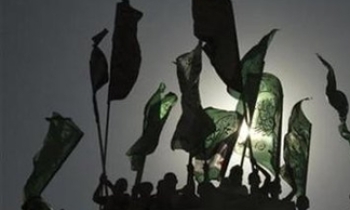Nearly five years after five major television organisations agreed on a policy to keep journalists safer, journalists are being killed in ever-increasing numbers.
Among the latest was Waleed Khaled, 35, a Reuters Television soundman who was killed Aug. 28 in Baghdad, and Steven Vincent, an American freelancer in Iraq who was shot to death in Basra Aug. 3.
Around the world, more journalists and support staff were killed last year -- the International News Safety Institute put the total at 117 deaths -- than in any year since at least 1994.
Research on the safety policy adopted in 2000 -- as well as interviews with 20 journalists and four managers at two of the news organizations involved -- suggest that it's time to revisit the issue and to involve news media staff more directly in policies aimed at protecting them. Newsroom managers are also going to have to persuade their staffs that their views on safety questions will be taken more seriously.
I base these conclusions on a study of camera operators and producers that I completed earlier this year as part of my studies at Rhodes University. The subjects of my research were both staff members and freelancers working for Associated Press Television News and and Reuters TV. (See comments on the research from APTN and Reuters TV.)
Along with CNN, BBC and ITN, APTN and Reuters TV drew up a common safety policy in late 2000. (See sidebar.) I focused my research on the formulation and implementation of this policy.
In order to encourage candid responses, I assured the participants that I would not share their names with anyone (see sidebar about Methods). About half of the respondents were based in Europe and half in Africa. They have covered conflicts in Afghanistan, Bosnia, Burundi, Chechnya, Congo, East Timor, Iraq, Kosovo, Liberia, Sierra Leone, Somalia and Rwanda.
In the course of looking at how these journalists perceive the "joint code of practice for journalists working in conflict zones," I found that most of those interviewed had not seen an actual copy of the policy. Among those who had, only a few had been shown it by their employers. Through word of mouth and other means, though, most of the journalists I interviewed said they were aware of the policy and that they generally follow its guidelines.
As recommended in the policy, both Reuters TV and APTN send staff and some freelance journalists to safety training courses. Most of the journalists I interviewed said they believed such courses had made them safer in the field. Where the companies appear to fall short, however, is in following up with the kind of "retraining" programs recommended by the policy as a mandatory step in the safety process. element in safety. Very few of the journalists I spoke with were aware that the policy calls for such retraining.
The research participants who had taken safety courses agreed, for the most part, that battlefield first aid is among the important aspects of the training. Although the courses offer good, user-friendly first-aid kits for sale, few of the journalists interviewed said they actually acquired them -- or any other kind of first-aid kits -- to take on dangerous assignments.
They also reported that another staple of conflict zones, the bulletproof vest, is generally provided by news organizations to staffers, if not always to freelancers. Citing a variety of problems with the vests (too heavy, too hot, too conspicuous, too much of a security risk), the journalists said they are not routinely worn.
Another, less-known reason for not wearing flak jackets emerged in this research: some journalists said they were reluctant to wear protective clothing if other people on their team -- fixers, drivers or translators -- did not have them. Some even said they would refrain from wearing their vests if fellow journalists from other news organizations, working the same event, lacked similar protective gear.
The research suggests that some journalists, bolstered in part by the policy but also by long-term unwritten rules, are beginning to refuse dangerous assignments. Some of those interviewed attributed such decisions to the particular dangers involved in Iraq coverage. Eleven of the 20 journalists interviewed said they had refused dangerous assignments. None of them reported any negative repercussions from their news organizations as a result. But some said they worried that it might have an impact on their careers in the long term.
Eleven of those interviewed said they (or someone they know) had used phony excuses in ducking dangerous stories. Among the excuses they mentioned: feigning an illness, faking a breakdown in transportation or equipment, inventing intervention by armed groups opposed to the coverage.
In follow-up interviews, some of the journalists said they made such excuses in the face of perceived pressure from editors back in the main office, some of them younger and less experienced than the people in the field being asked to take on risky assignments. They also said they sometimes felt such pressure from relatively young and inexperienced camera operators. The advent of cheaper, lighter and easier-to-use digital equipment had paved the way for some of these new arrivals, the journalists said, adding that the rookies often appeared more willing than the veterans to take risks.
The journalists I spoke with said they had adopted a range of strategies, unrelated to the official safety policy, to be able to balance safety concerns with the institutionalized competition with other news organizations. They said such measures include collaborating with their competitors without alerting their editors, and training non-journalists in the field to use a video camera in order to avoid placing themselves in dangerous situations.
Although both APTN and Reuters managers said that they had consulted some staff for the safety policy, very few of the journalists -- only two of the 20 -- said they had been approached for their ideas. The remaining 18 noted that they had not been asked for their views about the policy when it was being formulated, how the policy is working or how it could be improved. When asked for purposes of this research what they would suggest now, the journalists offered a range of ideas for news organizations to improve their approach to safety issues.
Among them:
- Make sure that news desks include journalists with extensive conflict experience -- perhaps on a rotating basis -- in order to help stressed editors provide better support to colleagues working in conflict areas.
- Encourage news organizations to invite internal reports (anonymous or otherwise) of inadequate safety equipment or pressure to take inappropriate risks.
- Take better advantage of the experience and insight accumulated by the people in the best position to know what's really involved in risky coverage. Most of the journalists I interviewed for the study expressed disappointment that they had not been approached for their ideas on the policy before it was adopted -- or asked for their feedback after it was put in place.
All told, the views of the journalists I interviewed ranged from the cynical notion that the policy was drawn up for insurance reasons to a belief that their bosses have genuine concern for their well-being. Some said that their employers could earn a quick boost in staff respect and loyalty by taking a simple step: getting a clearer picture of what the people on the front lines believe could be done to increase their safety.
Sahm Venter, a journalist since 1981, worked for several South African newspapers before joining the Associated Press as a correspondent in 1988. She served as the senior producer for southern African for AP's television arm, APTN (one of the organizations studied in the research reported above) from 1994 until 2002. She now heads the print training department of the Institute for the Advancement of Journalism in Johannesburg.









